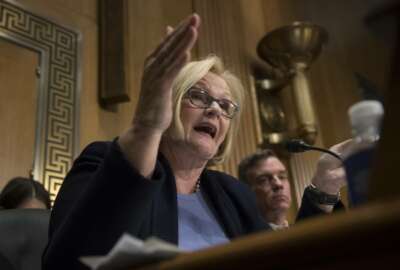
Can we predict what next year’s federal pay raise will be?
The pay raise process established in the U.S. Code relies on federally-collected data, which should make it easy to predict a year in advance just what kind of a...
Federal employees just got a small boost to their paychecks at the turn of the year. That boost is the last step of a process established in the U.S. Code that relies on federally-collected data, which should make it fairly easy to predict a year in advance just what kind of a pay raise federal employees will be getting. But how much does that process really matter, and how often does it actually determine the pay raise federal employees end up receiving? Can we predict federal pay raises a year ahead of time?
The Process
The process by which federal raises are calculated comes from Title 5 of the U.S. Code, which says that every rate on the General Schedule should see a boost in base pay that equals half a percentage point less than the previous year’s Employment Cost Index (ECI), a figure calculated by the Bureau of Labor Statistics.
So theoretically, the answer would be yes, we can predict federal pay raises. In fact, we’d be able to predict them more than a year ahead of time, because pay raises are based on the ECI released two years previously. For example, in 2019, federal employees should be getting a 2.0 percent raise based on the 2.5 percent ECI released by BLS in September 2017. And that’s before locality pay gets applied.
Except, of course, it’s not that simple, and rarely works out that way. Here’s a look at the results of the past decade.
Here’s how it actually works:
BLS collects data on changes in how companies across the country are compensating employees, including both wages and benefits, with the National Compensation Survey. That information allows them to calculate the ECI, which is the change in the cost of labor.
BLS also collects Occupational Employment Statistics, which is a series of estimated wages for more than 800 occupations.
That data is then sent to the Federal Salary Council, an advisory group comprised of experts in labor relations, pay policy, representatives from labor unions and other employee organizations. The Council examines the data that BLS collects, and uses it to make recommendations on federal pay raises and boosts in locality pay. The idea is to keep federal employees in comparable positions from falling too far behind their private sector counterparts through a mixture of across-the-board pay raises and locality pay to adjust for geographic factors like areas with a higher cost of living.
Those recommendations then go to the Federal Pay Agent, which consists of the Labor Secretary, the director of the Office of Personnel Management and the director of the Office of Management and Budget. They help the president translate those recommendations into policy.
But here’s where the system falls apart: The same statute that applies the ECI formula to derive federal pay raises also authorizes the president, for reasons of “national emergency or serious economic conditions affecting the general welfare,” to submit an alternate plan to Congress. That’s what’s happened the past several years, from then-President Barack Obama’s 2011 pay freeze to current President Donald Trump’s most recent determination on the 2018 pay raise.
“Under current law, in addition to a 1.9 percent across-the-board increase for the base General Schedule, locality pay increases averaging 26.16 percent and costing $26 billion would go into effect in January 2018,” Trump wrote in his August 2017 pay announcement. “A pay increase of this magnitude is not warranted, and federal agency budgets could not accommodate such an increase while still maintaining support for key federal priorities such as those that advance the safety and security of the American people.”
Instead, the president authorized an “alternative pay plan,” which in 2018 called for an average 1.4 percent across the board pay raise and an average 0.5 percent locality pay adjustment.
And it’s worth noting that already signs are pointing to the pattern repeating in 2019. In December 2017, Senate Homeland Security and Governmental Affairs Committee Ranking Member Claire McCaskill (D-Mo.) released a report based on a document that said OMB denied the Homeland Security Department’s request to provide additional pay to some DHS employees and added that the administration planned to issue a governmentwide pay freeze for civilian employees in 2019.
The president has until Aug. 31 to announce an alternative pay plan for the following year. After that, Congress can also offer alternatives, either through the budgetary or appropriations processes. Or Congress can remain silent on federal employee pay, which it’s done for the past few years.
If neither the president nor Congress offer alternative plans, then the ECI-based formula automatically goes into effect.
So under normal conditions, it should be fairly straightforward to predict federal pay raises. But the economic woes of the past decade have led to smaller pay raises than would be indicated by the ECI. And because previous administrations, and the current one, have not followed the schedule of locality pay adjustments, that 26.16 percent locality pay deficit will continue to grow and provide justification for alternative pay plans moving forward.
Copyright © 2025 Federal News Network. All rights reserved. This website is not intended for users located within the European Economic Area.
Daisy Thornton is Federal News Network’s digital managing editor. In addition to her editing responsibilities, she covers federal management, workforce and technology issues. She is also the commentary editor; email her your letters to the editor and pitches for contributed bylines.
Follow @dthorntonWFED





